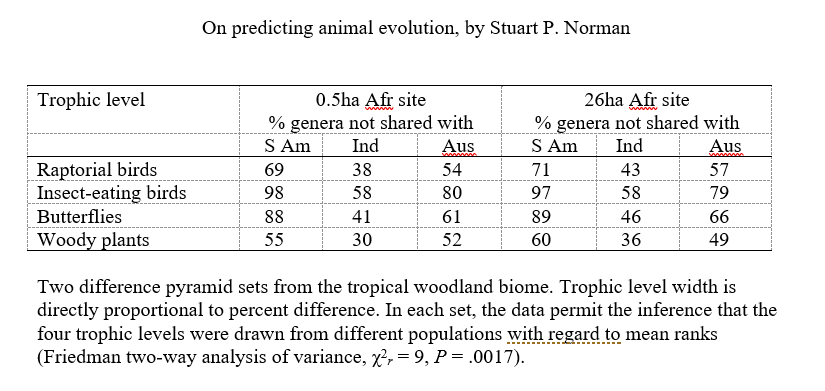The origination of most free-living animal species is predictable. ‘Light’ order production in the trophic levels below is the key. Absent from the abiotic environment (pre-primary level) and prokaryotes, ‘light’ order consists of differences in species composition between highly-developed, species-packed communities in which extinction may be the precursor to speciation, particularly ecologically comparable tropical continental lowland ones of Africa, Australia, India, and South America. Based on but not itself of matter and non-burnable, its nil waste heat content ‘compensates’ for burned-up food energy. Where the amounts of it on infra-apical trophic levels form an inverted pyramid like waste heat’s, occupancy of trophic levels from primary to apical is predictable (variation and selection assumed). Terminal non-inversion predicts post-apical vacancy. Examined communities were from grasslands (grasses, large grazing mammals, large carnivores), and woodlands (woody plants, butterflies, insect-eating birds, raptorial birds). Linnaeus’s binomial classificational system turned out to be unexpectedly rich in new content. A new object of study, the neoLinnaean, is recognised and a new process, the neoLyellian, advanced to explain it. Relations to Darwin’s and Lyell’s non-predictive theories of change, to ecology and evolution, to thermodynamics, statistical mechanics and quantum mechanics, and to neurology are discussed.

